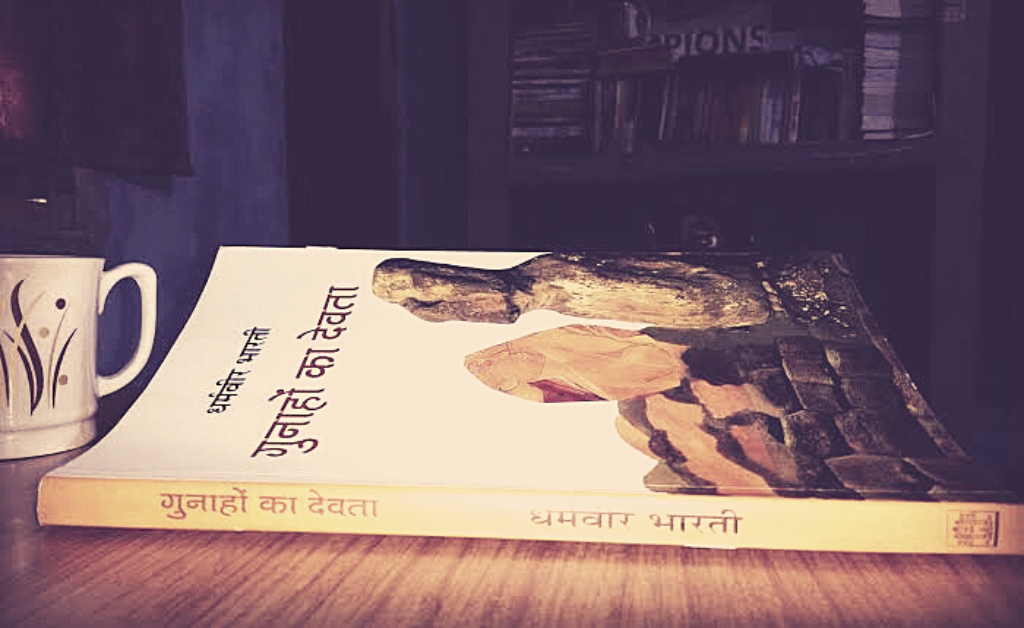Dharamveer Bharti’s “Gunaaho Ka Devta” is a literary masterpiece that explores complex human relationships and moral values in the backdrop of post-Independence India. Published in 1949, the novel is considered one of the most significant works of Hindi literature.
The novel follows the life of Chander, a young man from Allahabad, who falls in love with Sudha. Chander is from a lower caste than Sudha and so he doesn’t dare ask for Sudha’s hand in marriage from her father. While Sudha seems to be fairly ‘modern’, she cannot stand up to the social pressure of having to agree to marry the man of her father’s choice; Chander also forces her to abide by the wishes of her father. The story is set against the backdrop of Indian society, which is grappling with the aftermath of the Partition, and the struggle for national identity.
The novel is a classic example of a tragic love story, where the characters are torn between their social obligations and their personal desires. The main protagonist Chander is portrayed as a man with conflicting emotions. On one hand, he is deeply in love with Sudha, but on the other hand, he is bound by the norms and traditions of society. He is also portrayed as a man who is searching for his identity and his place in the world.

The novel’s title “Gunaaho Ka Devta” (God of Sins) is a reference to the main protagonist Chander, who is depicted as a complex character with both virtues and flaws. The author portrays him as a man who is trying to reconcile his love for Sudha with his loyalty to his family and society. Chander’s character is also an embodiment of the conflicting values that are prevalent in Indian society, such as caste discrimination, gender bias, and religious intolerance.
The character of Sudha, the love interest of Chander, is also portrayed as a strong and independent woman who is not afraid to challenge societal norms. She is a symbol of resistance against the oppressive social structures that exist in Indian society.
Chander’s calm and rational outlook towards life is replaced by a longing to untie the jumble of his emotions. At this point he turns to Pammi, a Christian girl, to explore the physical aspect of love which was hitherto unknown to him. When even the physical expression of love cannot alleviate his agony he turns to Binti in search of an emotional connection that really isn’t there. With the passage of time, it becomes abundantly clear that his heart longs only for Sudha and no one can replace her in his life.
The novel is also notable for its vivid and realistic portrayal of the Indian society of the time. The author provides a detailed account of the customs and traditions of the Hindu society, which is still prevalent in many parts of India today. The novel also explores the political and cultural changes that were taking place in India after Independence, which provides an insight into the social and political issues that were relevant at the time.
In conclusion, “Gunaaho Ka Devta” is a literary masterpiece that explores complex human relationships, social structures, and moral values. The novel’s main characters are portrayed as complex individuals who are struggling to reconcile their personal desires with societal norms. The novel is an important contribution to Hindi literature and remains relevant even today.
The Poetry Cosmos welcomes all people who want to learn more about literature, no matter their age, experience, or education. We believe in the innate creativity of all people by encouraging and fostering experimentation and innovation. We invite everyone who values arts and culture to explore the written word. Click here to join our community.

